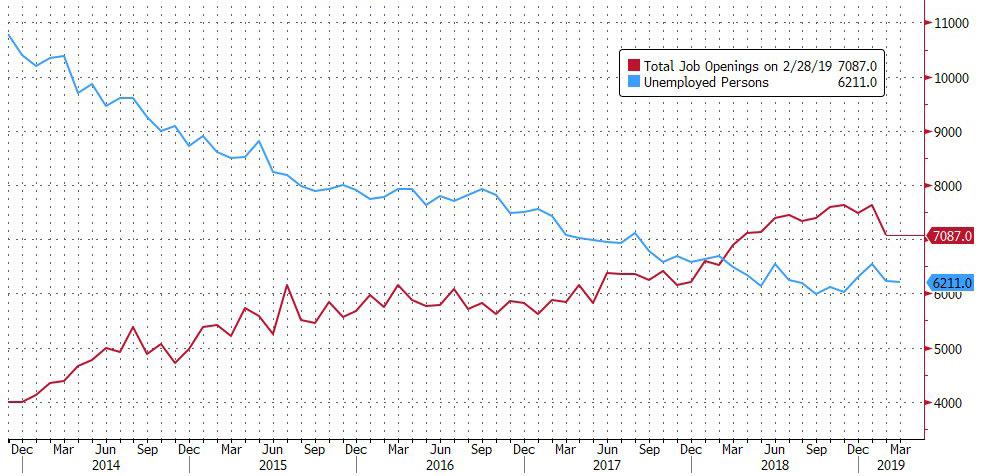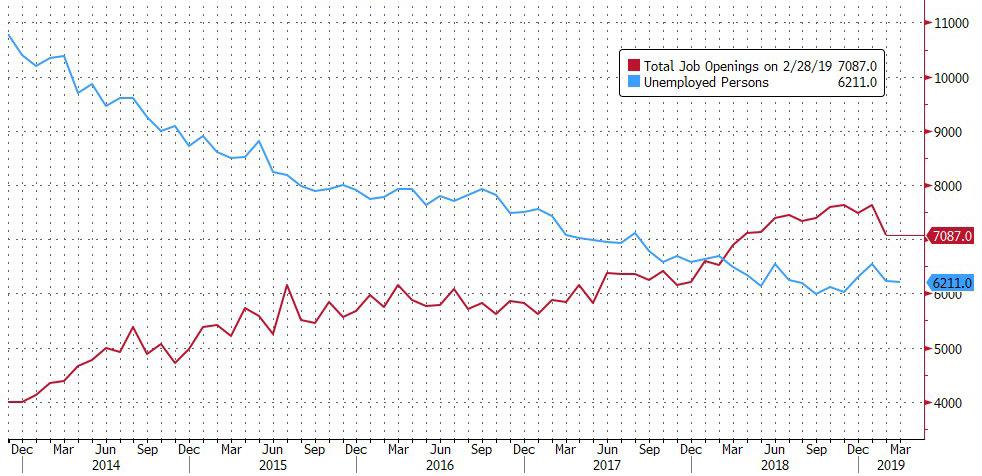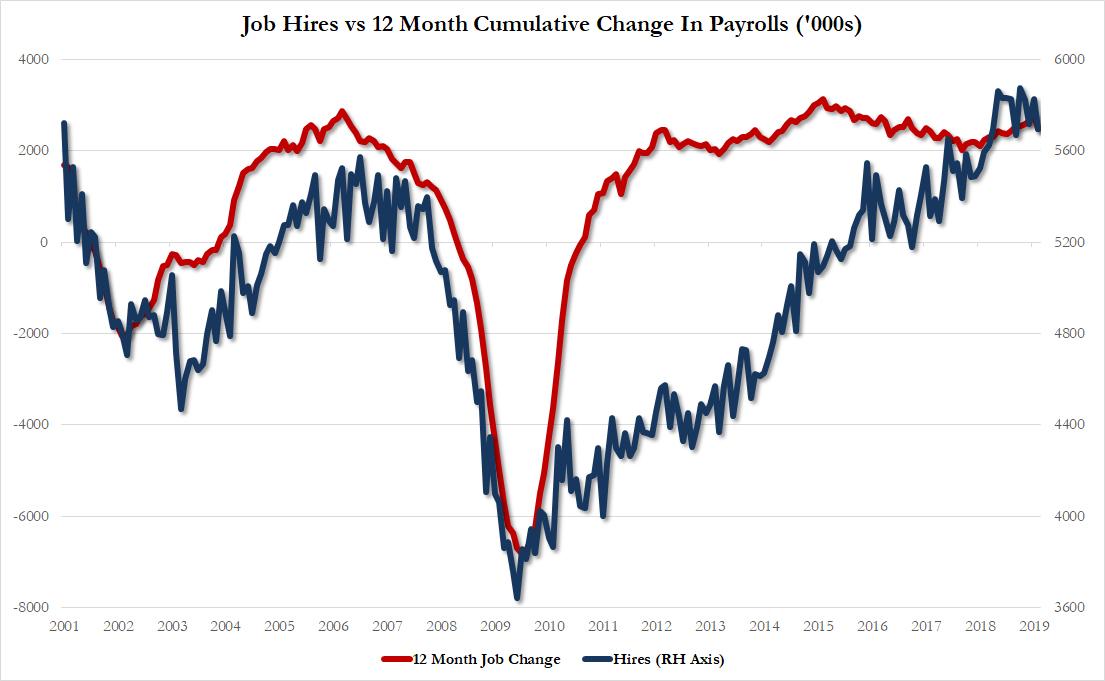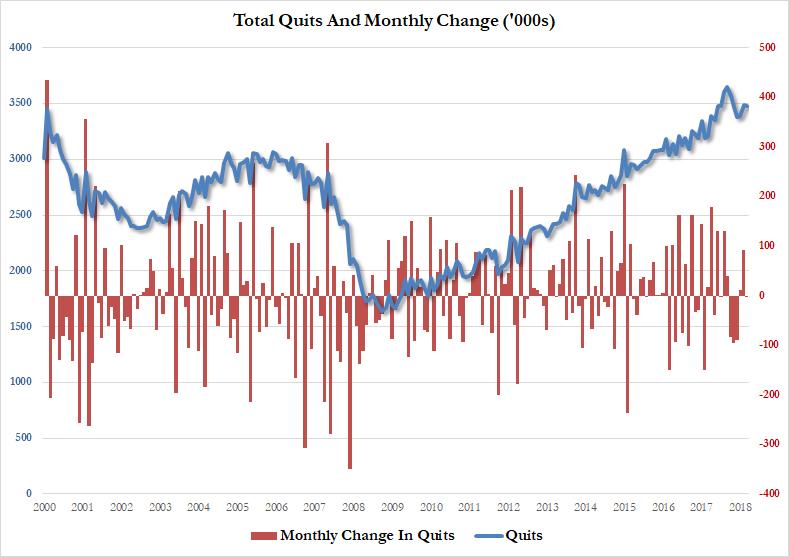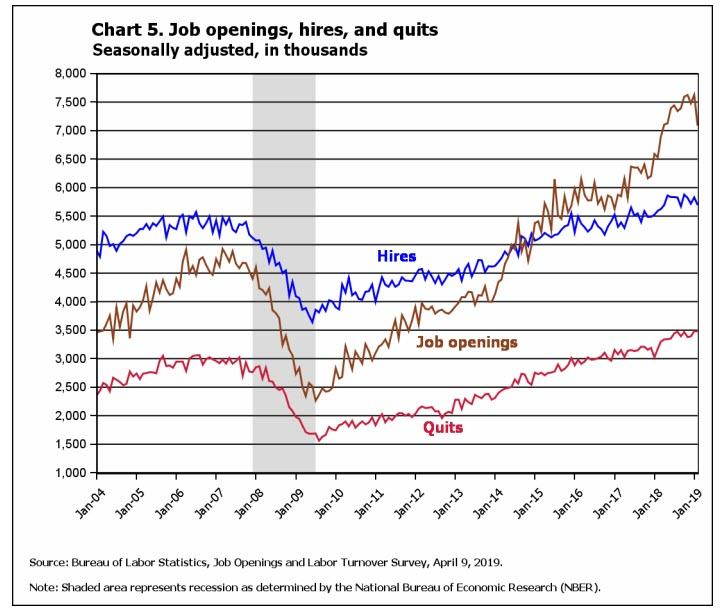Back in February, the BLS reported a dismal jobs report, when the unrevised number saw only 20K payrolls added. While the subsequent data saw a marked improvement, and an upward revision to the February number which was a cold-weather related outlier, the JOLTS survey appears to not have caught up, and the result was the ugliest job openings survey in three and a half years. Specifically, in February, the BLS reported that only 7.087 million jobs openings existed, the lowest number since March 2018, and a drop of 538,000 in one month: the biggest plunge since August 2015. Notably, the January print was revised higher to 7.625 million, effectively tied with the all time high in this series.
Ironically, just last month we said that “with the Fed positioned for an economic slowdown, the JOLTS data better turn negative fast or else Powell will soon be facing some very unpleasant questions why the Fed’s rate hikes are on pause when the number of job openings in the economy is soaring to unprecedented levels.” One month later, as if on cue, we got the most negative JOLTS data in almost 4 years.
According to the BLS, the number of job openings fell for total private (-523,000) and was little changed for government. Job openings decreased in a number of industries, with the largest decreases in accommodation and food services (-103,000), real estate and rental and leasing (-72,000), and transportation, warehousing, and utilities (-66,000). The number of job openings fell in the Northeast, South, and Midwest regions.
Despite the plunge in job openings, February was the 12th consecutive month in which there were more job openings then unemployed workers: considering that according to the payrolls report there were 6,21MM unemployed workers, there were 876K more job openings than unemployed workers currently, (how accurate, or politically-biased the BLS data is, is another matter entirely).
In other words, in an economy in which there was a perfect match between worker skills and employer needs, there would be zero unemployed people at this moment (of course, that is not the case.)
Adding to the sharp deterioration in the labor picture to close the year, as job openings tumbled, so did the number of total hires which dropped by 133K, to 5.696 million, the lowest since last September. The hires level hires level was little changed for total private and fell for government (-40,000). The number of hires decreased in construction (-73,000), nondurable goods manufacturing (-33,000), and state and local government education (-22,000).
According to the historical correlation between the number of hires and the 12 month cumulative job change, the pace of hiring right now is precisely where it should be relative to the cumulative change in hiring.
At the same time, the so-called “take this job and shove it indicator”, the quits level, was surprisingly resilient in a month in which everything else collapsed, and dropped by just 3K to 3.480MM.
Putting all this in in context
- Job openings have increased since a low in July 2009. They returned to the prerecession level in April 2014 and surpassed the prerecession peak in August 2014. There were 7.1 million open jobs on the last business day of February 2019.
- Hires have increased since a low in June 2009 and have surpassed prerecession levels. In February 2019, there were 5.7 million hires.
- Quits have increased since a low in August 2009 and have surpassed prerecession levels. In February 2019, there were 3.5 million quits.
- For most of the JOLTS history, the number of hires (measured throughout the month) has exceeded the number of job openings (measured only on the last business day of the month). Since January 2015, however, this relationship has reversed with job openings outnumbering hires in all months.
- At the end of the most recent recession in June 2009, there were 1.1 million more hires throughout the month than there were job openings on the last business day of the month. In February 2019, there were 1.4 million fewer hires than job openings.
And visually:
via ZeroHedge News http://bit.ly/2WZSkzP Tyler Durden
